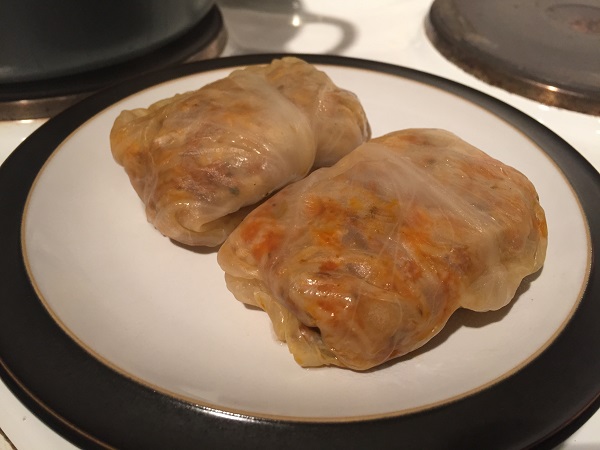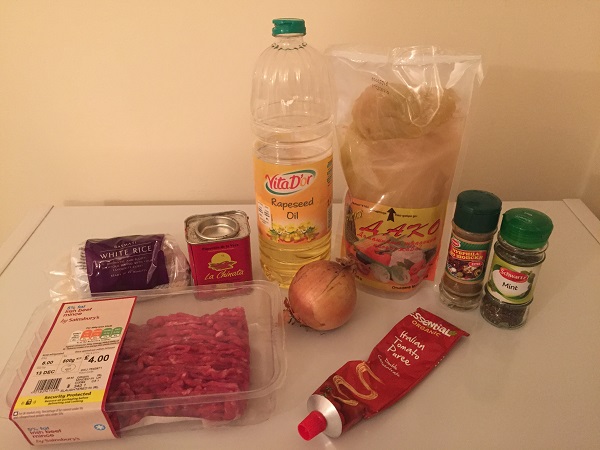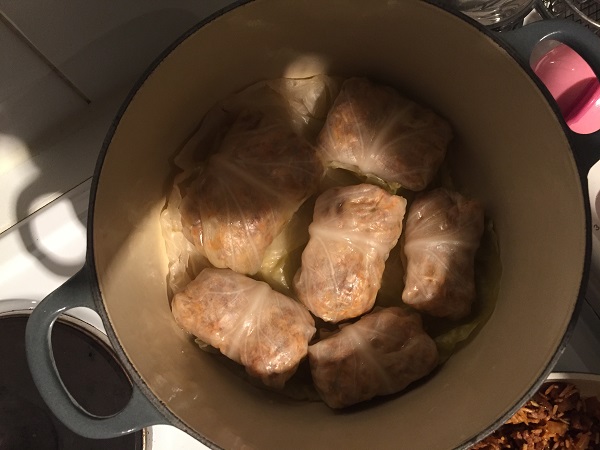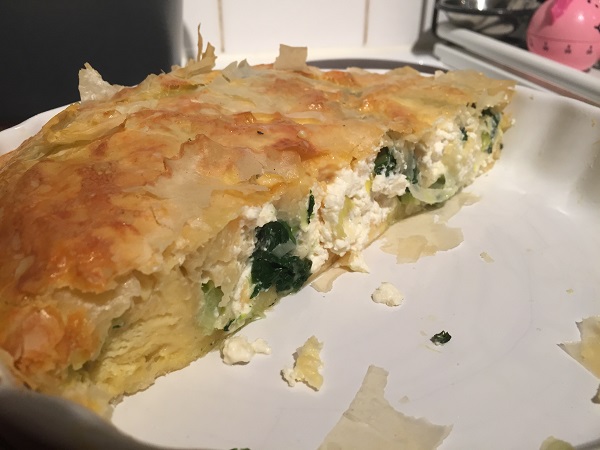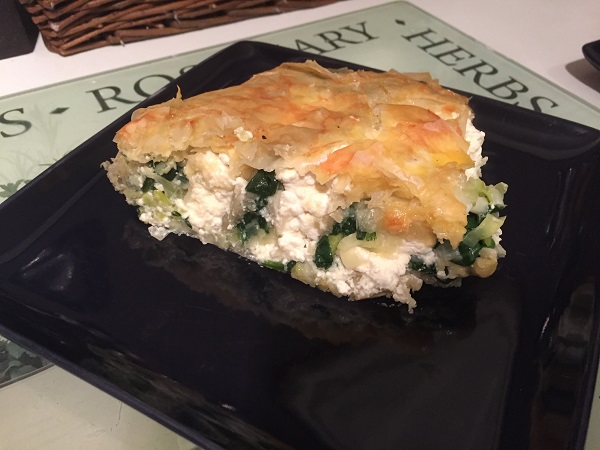Have any of my readers ever tried Bulgarian cuisine? Unless you’re Bulgarian or have visited the country, I’m guessing the answer is no. Thanks to Expedia, I now have – I was invited to take part in their World On A Plate challenge, and was sent a whole host of different Bulgarian ingredients to help me to create an authentic Bulgarian dish in my own kitchen.
I made sure to fully research Bulgarian cuisine before I began, and was surprised to find out that there are not only similarities with other Balkan states (hardly a surprise), but also plenty of ingredients and dishes that are similar to Middle Eastern and Turkish foods. Menus traditionally feature plenty of stews as well as cured meats, which are served along with lyutenitsa (a spicy tomato chutney with a number of variants) or even yoghurt, which (as in Turkish cuisine) is often served alongside savoury dishes.
Other similarities to other cultures include the popularity of Greek/Turkish dish moussaka, the brined cheese known as “sirene”, which is similar to feta, and a penchant for both grilled meat and a variety of salami-type cured meats, served with dips and cheeses as an appetiser.
My parcel of Bulgarian goodies included a jar of shopski seasoning, a pack of brined cheese made from a combination of cows’ and sheeps’ milk, a pack of pickled cabbage leaves and a roll of filo pastry – and it was with these four ingredients that I decided to make two different dishes.
Sarmi – stuffed cabbage leaves
Sarmi are traditionally Bulgarian – although you’ll recognise them in a slightly different form from various Mediterranean cuisines. Essentially, they’re cabbage leaves stuffed with a combination of meat and rice – similar to the stuffed vine leaves known as dolma that you’ll find in Turkey, among other places.
They’re a little fiddly to make, and involve cooking up beef mince with onions, seasonings and rice before rolling the mixture in cabbage leaves and cooking in boiling water. They were worth the effort, though – but next time I’d probably rinse the cabbage leaves a little better before using (they still had quite a vinegary flavour once cooked). Apparently they’re a traditional Christmas food, and we enjoyed them served with a dollop of Bulgarian yoghurt, which was also included in my box of goodies from Expedia.
My quantities were a little off, and I had more mixture than cabbage leaves – but we simply added a tin of tomatoes and cooked the leftover mixture down further to turn into a stew for the next day.
Ingredients:
- 600g pack of pickled whole cabbage leaves
- 500g beef mince (you can also use pork)
- 150g medium grain rice
- 1 onion, finely diced
- 2 tbsp oil (Bulgarians tend to use sunflower, we used rapeseed)
- 2.5 tbsp tomato purée
- 1 tsp paprika
- 1 tsp shopski seasoning (omit if you don’t have it)
- 1.5 tsp dried mint
- Salt and pepper, to taste.
1. Heat the oil in a large pan and cook your onions until translucent but not coloured. Then, add the mince and cook for a further 10 minutes, stirring to ensure that all of the meat is browned and breaking up any large chunks.
2. Add the rice to the pan (with a little more oil if you’ve chosen very lean mince) and stir continuously to coat for about 2 minutes. Add the tomato purée, paprika and a little boiling water and mix well. Cook for another 2 minutes or so before adding the shopski seasoning (if using), the mint and salt and pepper to taste. Set aside and leave to cool.
3. Rinse and drain your cabbage leaves. Take a large, heavy-bottomed pan with a lid, and place a large leaf or a few small ones at the bottom of the pan.
4. It’s now time to roll your sarmi! Take a cabbage leaf and place it on a board with the thick, stalk end closest to you. Place around 2 tsp of the filling (it should be cool enough to handle) in the centre and roll up each of the sides, tucking them in to form a cylinder shape. Make sure that it is nice and tight so it doesn’t fall apart when cooking.
5. Place your stuffed cabbage leaf on top of the leaves already in the pan, and repeat until the base of the pan is covered with stuffed cabbage leaves. Then, place another unfurled leaf or two over the top, and add another layer of stuffed sarmi. Keep going until all of the leaves have been used, finishing with a layer of flat, unstuffed leaves.
6. You’ll then need to weight the sarmi down so they don’t unravel while cooking. We used the lid of a smaller pan and put a metal spoon in the pan, the end on top of the smaller lid. When we placed the lid on the large pan, the weight of this lid pressed down on the handle of the spoon to keep the smaller lid in place. Before we placed the big lid on the pan, though, we added enough boiling water to cover the sarmi, then covered with the lid, brought it to the boil and left it to simmer for 30 minutes.
7. Once cooked, remove each of the sarmi with a slotted spoon, taking care to drain off as much water as possible while keeping them intact. Serve with Bulgarian yoghurt.
So…that was dish number one – a lovely warming meal option, and we enjoyed the leftovers heated up the next day too.
Our second dish was zelnik – a traditional dish that involves rolling filo pastry with spinach, leeks and sirene cheese, before placing in a circular pan in a spiral shape, topping with beaten eggs and baking. Again, it was a dish that involved a lot of effort: cooking off the vegetables, buttering the pastry sheets, filling and rolling then arranging them in the dish, but it was well worth it: we served it sliced as you would a pie. The saltiness of the cheese and the fresher flavours of the vegetables worked really well together, and it’s something I’d happily make again – maybe experimenting with different fillings. The recipe that we used is here, if you’re interested in giving it a go.
While these Bulgarian ingredients weren’t something that I’d normally pick up if I saw them in a supermarket, this World On A Plate challenge has taught me a lot about the country’s food culture, and given me the impetus to try out some recipes that I’d never have considered making before. We were impressed – maybe now I’ll even start to think about a foodie trip to Bulgaria – I hear that the costs while you’re out there are quite low too…
Please note: these ingredients were received free of charge, but all of this content is our own.
